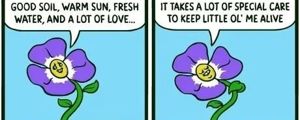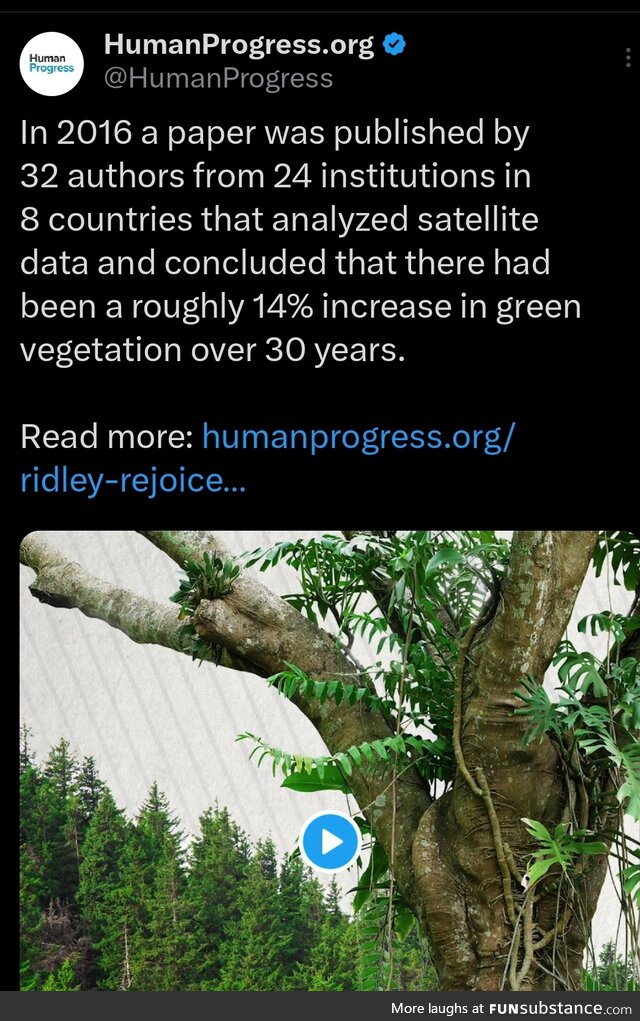Featured Posts

I wish I had a fort

The powerof positive thinking

NASA

Pray for Australia

Take care of each other

She has emerged

My soul feels so much better

I just ordered one. #Just2019HispanicThings

He really wanted his photo at the Halloween party, but was super scared of the spiders

The Only Thing More Contagious Than COVID19 Might Be This Fox's Smile
About
FAQ
Contact
Rules
Terms
Privacy
Feedback
Keyboard Shortcuts:
Previous Post · Next Post · + CTRL Skip Post
Previous Post · Next Post · + CTRL Skip Post
© 2025 FunSubstance · funny and entertaining pictures, memes, gifs & videos.



But a larger question concerns the data.
“Green vegetation” is a colloquialism, not a strictly scientific category. It can simply mean plants that look green, or it can mean plants which have chlorophyll as opposed to parasitic plants or, where classified as plants- fungi.
But context is missing. For example- most food crops are “green vegetation” and as such, over 30 years, a global average of 13% increase could be accounted for in whole or part by industrial farming yield increases.
So is this wild crops? Of an average of 13% growth- where is that growth? Is it 1% in most of the world and 50%, 200% etc. here and there to equal an average of 13% global “green vegetation”? Because when it comes to weather and local ecosystems etc. a net global increase doesn’t have the impact of a local increase.
Wow. And that means exactly nothing to any sane person reading this because you don’t even know what a fleep florp is most likely and there is no context or information to indicate wether that is a good thing or a bad thing.